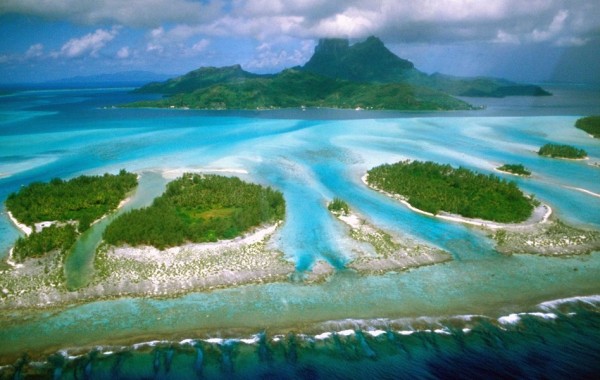By Ana Verayo, | April 12, 2016

Bora Bora islands in Polynesia are at risk of heavier rainfall in this century.
Global rising sea levels are now threatening the existence of low lying islands. Climate change and global warming are making the planet hotter, however continuous drought is also a major driving factor for these alarming events.
In a new study, about three quarters of the planet's islands that are home to an estimated 16 million people will become more dry and arid by the middle of the century. Data collected from surveys across 80 islands revealed that warmer temperatures can cause more evaporation of water even before this amount of water will be replenished by rainfall.
Like Us on Facebook
Island regions that will be most severely affected by this drying up are the Lesser Antilles located in the Caribbean along with St.Lucia and Grenada, including Polynesia which are immortalized by Paul Gauguin in his paintings, and the Robinson Crusoe in southern Pacific. However, some islands in the tropical region such as the Marshall Islands and Kiribati will experience heavier rainfall this century.
Growing human populations are now affecting the water supply of many islands, as this acute scarcity in water supply can be attributed to limited catchment areas and more human demand.
Climate scientists are still studying these weather patterns since obtaining more accurate forecasts along smaller archipelago nations and atoll regions are rather lacking in data, since these regions do not typically register in current global climate models.
According to author of the study, Kristopher Karnauskas from the University of Colorado-Boulder, until now, those who are living on a small island in the middle of the ocean are still without information about climate predictions for the future, unlike the rest of those who are living on big land masses.
Upon calculating future predicted levels of evaporation and combining them with rainfall and other precipitation forecasts, Karnauskas says that these can help planners to adapt infrastructures and agriculture methods for upcoming shortages and imbalances in water supply.
This new study is study published in the journal, Nature Climate Change.
-
Use of Coronavirus Pandemic Drones Raises Privacy Concerns: Drones Spread Fear, Local Officials Say

-
Coronavirus Hampers The Delivery Of Lockheed Martin F-35 Stealth Fighters For 2020

-
Instagram Speeds Up Plans to Add Account Memorialization Feature Due to COVID-19 Deaths

-
NASA: Perseverance Plans to Bring 'Mars Rock' to Earth in 2031

-
600 Dead And 3,000 In The Hospital as Iranians Believed Drinking High-Concentrations of Alcohol Can Cure The Coronavirus

-
600 Dead And 3,000 In The Hospital as Iranians Believed Drinking High-Concentrations of Alcohol Can Cure The Coronavirus

-
COVID-19: Doctors, Nurses Use Virtual Reality to Learn New Skills in Treating Coronavirus Patients







